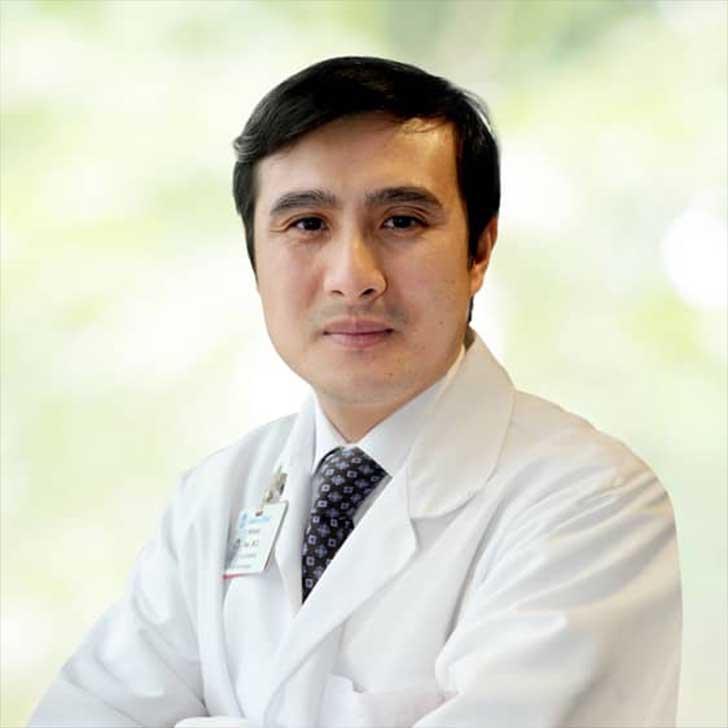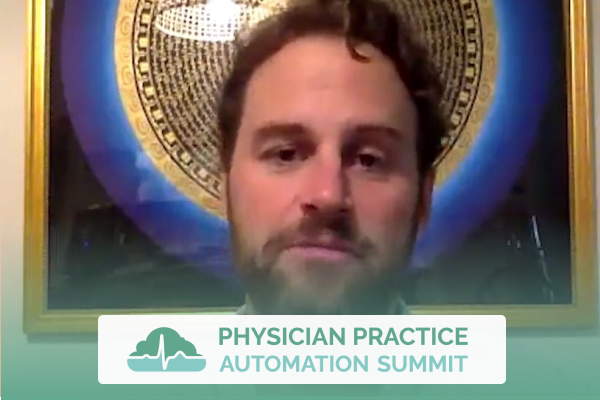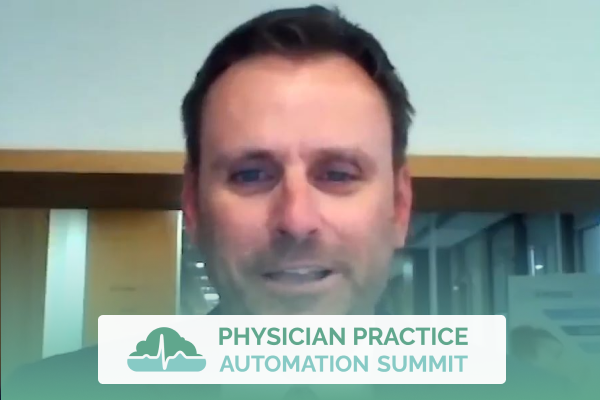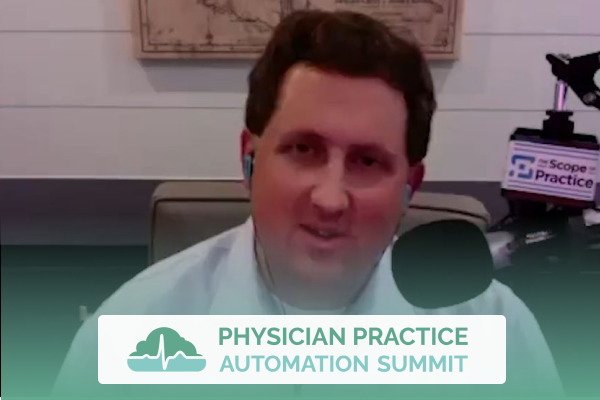Join the discussion below

Dr. Ruan is the Founder and CEO of Texas Center for Lifestyle Medicine. He devotes his career in practicing and building systems that allow for efficient delivery of healthcare. He is a board certified internal medicine physician but also have advised with companies to improve their workflow, company culture, marketing,... Read More

Dr. Will Hsu is an endocrinologist with 20 years of clinical experience who has joined L-Nutra as the Chief Medical Officer, leading clinical development and medical affairs. Previously, Dr. Hsu was Vice President at Joslin Diabetes Center, a Harvard Medical School teaching affiliate, leading their global care and education program.... Read More
Cheng-Huai Ruan, M.D.
On this segment, I’m really honored to introduce that Dr. William Hsu, one of the most respected endocrinologists in the world. He’s got 20 years of clinical experience and he currently is the chief medical officer at a company called L-Nutra and leads clinical development and medical affairs. So Dr. Hsu is internationally renowned expert in diabetes. He was an assistant professor at Harvard Medical School and also co-authored the National Standards of Care and Policy Changing Positional Statement for the American Diabetes Association. He also served on National Clinical Guideline Committees at the American Optometric Association and the Jocelyn Diabetes Center and he’s done a tremendous amount of clinical research on nutrition and digital health as well as diabetes, of course.
He is a graduate from Cornell University and received his medical degree at Mount Sinai School of Medicine in New York City and completed his residency training program at Yale University and fellowship in endocrinology and metabolism at Harvard Medical School. And so what we’re talking gonna be talking about today is really introducing the concept of what this company L-Nutra is able to really accomplish and how they’re really able to stand out in their field and what does it mean to physicians who want to incorporate lifestyle medicine into their clinical practice? We talk about CPT codes, we talk about what’s new and up and coming in terms of research and reimbursable events, communication codes. We get into this discussion by also understanding what are we, what should we really be measuring when it comes to patient outcomes, life longevity, and whatnot. I can’t wait for you to hear this segment. Welcome to the summit.
William Hsu, MD
Hey, thank you, Dr. Ruan for inviting me. I’m very excited.
Cheng-Huai Ruan, M.D.
Yeah, listen, we’ve been working together for awhile and I’ve been working with Prolon, or L-Nutra actually, the makers of Prolon, for awhile, but the reason I have you on is to talk about really how we can utilize programs such as the Prolon fasting mimicking diet into clinical practice and what exactly is the model that we really should be adapting to. And so, first of all, let’s just have you kind of introduce exactly what is L-Nutra and what is Prolon and how is it very distinct from everything else in the industry?
William Hsu, MD
Yeah, you know I think L-Nutra is one of the most innovative companies in what we call the nutratech space. We’re calling this term nutratech because we’re really borrowing the concept from the biotech industry. So we’re trying to use really the rigor of the biotech industry and apply it to nutrition. And this company was founded by Professor Valter Longo from University of Southern California and all of the research, the foundational research, were all done through funding by the National Institutes of Health and from the European Union. So it’s really a tech transfer from universities, looking at how we can truly use nutrition as medicine. And so our mission is really to add life to life through lifestyle medicine. And this is really the mission and we want it to really help people to live beyond 100 years without the boundary, without limitations by aging. Big goal.
Cheng-Huai Ruan, M.D.
Huge goal. And one of the things that I initially tagged onto the company is this concept of longevity, right? So I think the concept of longevity, sometimes it’s sustained in different ways. Can you kind of define exactly what longevity really means and how that’s really unique to like the fasting mimicking diet program?
William Hsu, MD
Yeah, so it’s really interesting, right? So people used to say I want to live long, but then if you look at a, as clinicians, you and I, see people towards the end of life filled with so many different conditions, right? I mean that burden, the quality of life is terrible. So the concept of health span really was introduced. It’s the amount of time you live healthy, right? So rather than living completely long, it’s how long you live healthy, right? And so that’s really a concept we’re driving after, Dr. Ruan. And we’ve discovered that there’s actually this intersection between nutrition, longevity, and fasting. We’re really try to hone in on how these three factors interact with one another through a nutrition intervention that L-Nutra is researching, is producing. That’s really what all of the rage and the excitement is all about.
Cheng-Huai Ruan, M.D.
Right, there’s been a lot of stuff in the media about fasting mimicking diet in general as well as clinical research. I mean the last, publications over the last couple of years has been pretty groundbreaking. Although it started really as I was looking at some animals and then now going into some of the human research behind fasting, the fasting mimicking diet, it’s very wonderful. And so if you guys want to learn more about it, go to the L-Nutra website and just, there’s a whole science page that’s there. But this discussion here is not really looking at that. This discussion here is more about the automation process and how does that work into a clinical practice? So I’ll tell you this, at Texas Center for Lifestyle Medicine, we’ve been very involved with fasting mimicking diets and Prolon from the get-go.
And one of the things that was very profound to me is that people have this sort of this concept behind what fasting really is and calorie restrictions and stuff like that. And so when we’re able to open up the discussions behind some of the other methodologies to improve longevity, improve their quality of life, from an organizational side, three surprising things really came up. The first one is that we start talking about things that we don’t regularly talk about is what happens in the calorie restrictive state in the absence of certain food. And what comes out of that is that we start discovering other social determinants of health that we weren’t really seeing in the first place. There’s a support structure that may be missing from patients, right? There’s also financial structures that may be missing from the patients. And then there’s other structures that surround access to medicine and healthcare and related to trust between a patient and the physician.
So a few years ago, when we actually started working with Prolon and getting people to go on these regimen, those concepts really changed the way we actually practice medicine at Texas Center for Lifestyle Medicine, so much so that we built programs really around the support of these conversations. So it was very fascinating and enlightening thing to really discover. Now, in terms of executing programs like this, it’s the second thing that we discovered is that it’s not so easy as a plug and play here to this and we’ll see what happens. The second thing we figured out is that we have to measure outcomes.
We have to see before and afters on different things, right, whether it’s biometrics, lab work, perceived patient improvements. And then when we’re able to show that hey, these things actually work, which leads me to the third point, is that you have to demonstrate to the other patients that hey, there’s other people that are before you that have achieved this success and I would love for you to achieve the same level of success. And therefore, I would like for you to kind of go on the same track. And that’s how we’re able to kind of accelerate the program at the very beginning. Have you sort of heard things like that from other practices?
William Hsu, MD
Yeah, before I joined Nutra, I was an endocrinologist taking care of patients, especially people with diabetes and one of the biggest problem is you know the world now is not missing knowledge. You can YouTube it and you can get all kinds of experts talking about things, but how do you actually implement it into your practice? How do you really patch it in such a way that people can respond to those interventions is really the key here. So you’re talking about not just about medicine. I mean, there’s a really interesting study that was published recently looking at the average A1Cs of patients with diabetes.
In fact, there’s five, six, seven drugs coming out on the market over the last 10 years, our average A1C actually has not improved. So you know it’s not just about a novel intervention like a new drug. It has to somehow be packaged into a practice where the physicians can intervene in such a way where you track the outcomes and then close the loop on the behaviors. So Dr. Ruan, I understand exactly what your talking about. It’s that system integration, right, not only taking a novel product, but how do you fit that into a practice, how do you fit it into the patient’s ecosystem that eventually is gonna drive the outcomes?
Cheng-Huai Ruan, M.D.
Yeah, absolutely. And we have to track it to know what the actual outcomes are. And so that brings me to the next point is I know L-Nutra is starting sort of a coaching program for the fasting mimicking diet. So for those of y’all who don’t know, the Prolon is the five day fasting mimicking diet program where our patients actually go through the five days of the program, they’re eating things within the actual program and then they do that once a month for multiple months and then we can track them over multiple months to see how they actually do. And so the biggest pain points sometimes for us is the same thing that we experience in every other practice which is patient compliance and then also adhering to the program as described and then also understanding expectations, which I do think means a lot of coaching. We do quite a bit of that through our practice. But let’s talk about the implementation of coaching. How does that marry into the program for L-Nutra?
William Hsu, MD
Yeah, absolutely. So with the five day fasting mimicking diet program, what it does is it stresses the body to a point where the body has to respond. Fasting has been, the human body has seen fasting since the early days. I mean if you look at all the mechanism behind fasting that has come from observations in East, to flies, to rodents, to mammals, to humans, I mean those pathways have been conserved, right? And so that means the body knows what to do with fasting. But fasting, for a lot of our patients, a straight water fast for a couple days may not be very safe. And that’s why we’ve invented the fasting mimicking diet or by the trade name Prolon to mimic a five day fast.
So when you fit that five day program into a practice, you’re talking about five days per month repeated a couple of times, three to four times, to reach a metabolic goals, inevitably, it’s like you’re taking someone through a jogging training. The first time, people are gonna experience a little bit of like, well, I’m too tired to run the five miles. Okay, you got to start slow. And having somebody to help you, or let’s say if you’re going to a gym and start weightlifting, it’s really comforting to know there’s a coach nearby to help you, hey, this is how you lift the weight, let’s not start too heavy, let’s do the warm-up before and afterwards. And so if we talk to, already, the body knows what to do fasting, when you add the coaching to it, you’re talking about motivation.
You’re talking about helping people to answer some of the questions they have. Should I exercise during fasting? What can I do? What do I do with my other medications? So all of that supervision by physicians and coaches can ensure that people come back to the second fasting regimen, the third, the fourth. Now just like exercise, there’s not a single exercise that you do once, it’s gonna give you the health benefits, come on, right? You do yoga once, you got to repeat those exercises. Adding coaching to a five day fast can ensure your adherence, number one. Number two, can provide the high touch that patients really need during those nutrition intervention.
Cheng-Huai Ruan, M.D.
Yeah, coaching itself I think is just game changing because it really allows, it really elevates everyone else that’s around the coaches. So the coach’s job is designed to elevate the physicians to practice at the highest level and let the medical systems do their thing on the coordination. But the coaches discuss this with the patients. And I think that if we were to implement something like this, it would be not only really changing to the practice, not only changing to the patients, but I think for the business of medicine, actually would be changed quite a bit, and this is what I mean by that. So recently, in 2020, there were big changes to the CPT codes and ENM codes by the AMA CPT Committee that was launched. And a lot of this surrounds conversations and surrounds on digital touches.
And what digital touches really mean is like patient outreach and check-ins and stuff like that. And so we see that the country, the United States, is going towards a system where communication is actually being reimbursed. And when I say this, a lot of physicians don’t really understand or know what that really means. So reaching out to patients through a phone call, through a text message, through a secure message, through email, whichever modality it is, there’s specific CPT codes that’s attached to it that’s reimbursable by insurance, whether it’s Medicare or private insurance or whatever it is, right? And so coaching in 2017, had its own, you can call it T codes, temporary codes, or category III codes that weren’t necessarily reimbursed, but they were tracking codes, but in 2020, behavioral modification became a big thing.
So behavioral modification basically dictates that whenever we’re trying to get our patients to change their behaviors in one way or another, there’s actually reimbursable codes that are for this. So there’s behavioral modification for a one-on-one, doctor to patient, one-on-one allied health professional to patient. There’s group CPT reimbursements. There’s also reimbursements for discussing a patient with their family with the patient there as its own CPT codes and without the patient there has its own CPT codes, like in our dementia programs and stuff like that as well.
So there is a huge emphasis right now on the reimbursement of communication and behavioral health modification. And in 2022, the AMA CPT Committee, and that conference is in November, and if you’re watching this in replay, it probably passed, but if you’re watching this live, that conferences is in November, on the very last day of the CPT committee, there’s one last bullet there I think they’re gonna talk about for 30 minutes, which is reimbursement for collecting data from social determinants of health, finally, collecting all those different data points. Now, we don’t know what it looks like yet until that meeting is done, but the world, or the country I would say, is going towards a system where there’s a recognition that the social determinants of health are important, that communication is really important, and that these behavioral change is very important as well. So the addition of coaching to really any practice, not only is it a possibly very profitable venture, but it’s also very scalable as well and it delivers really good quality of medicine because we know it decreases hospital readmissions, it decreases ER visits, it improves patient compliance, improve patient outcomes. So I think that the addition of coaching to a program such as the fasting mimicking diet is only gonna accelerate.
William Hsu, MD
That’s amazing. It’s music to the ears of what we call this cognitive practitioners, right? So versus the interventional, right? So a lot of the physicians that did the intervention, they benefited from all the codes that really favored interventions, paying for a procedure, right? Now, those of us who take care of patients, who communicate with patients, that try to really figure it out the behavior changes, finally, there’s a way to reimburse for all the efforts and the time that the cognitive clinicians are giving to their patients and to their practice.
Cheng-Huai Ruan, M.D.
Absolutely and I think this model really came from psychiatry. So a lot of these behavioral change codes were only accessed to mental health professionals until 2020. What happened in 2020? Well, you have the global pandemic. And all of a sudden these CPT codes were updated to these new CPT codes that were now accessed by pretty much all practitioners. So I do you think that the addition coaching is not only smart, it’s a good business plan, and I think that it really allows doctors to really want to practice the way that we want to practice. We want to be able to encourage our patients, we want to be able to make sure the patients are successful and compliant. I think that any sort of communication like this is just gonna be a very powerful thing. Let’s go back into the coaching program that L-Nutra is putting out. So we talked about how the Prolon program, it’s five days a month, maybe multiple months straight. So are these coaches trained to take patients only through the five days or is that even like the rest of the month until the next month or how does that work?
William Hsu, MD
The program is certainly strong hand-holding during the five day program, but they’re also the 25 days, right? What you do during the 25 days can augment what happens in the five days. Biologically, it’s really the alteration between fasting and re-feeding, the proper re-feeding, that’s really the secret to healthy aging and to health. It’s much like you can exercise all you want, but if you don’t have rest and proper nutrition, right, you’re not really optimizing the benefits of exercise. So the coaches are gonna play a major role also during the time between the interventions or nutrition interventions. So it’s both.
Cheng-Huai Ruan, M.D.
Yeah, absolutely. And so if the coaches are walking the patients through these, and then from one round to the next round, are the coaches also communicating with the physicians on the back end to make sure the patients are doing what they’re supposed to do?
William Hsu, MD
So the coaches really do not replace clinicians. I think that’s something that we need to remind. All the medication, the clinical judgment and the supervision is done by the clinical team. The coach is really focused on motivation. Hey, are you getting tired there? What are your barriers? Can I find answers for you? Can I pump you up? Can I remind you a few things? So it’s about setting up a goal and achieving that goal. It’s about thinking through the program. And so there is a, the coaches are trained through Johns Hopkins Coaching Program. And so it’s all about motivation, activation, engagement. And so at the end of the program, which is a four month program, the coaches will communicate, essentially send a final report to the clinician, reporting the adherence of the patient, the barriers of the patient, what the patient has achieved, and that could be very helpful as part of the medical records for the clinician.
Cheng-Huai Ruan, M.D.
Oh, absolutely, yes. I think that with that line of communication and also the report, not only is it helpful, but it’s actually necessary to document because a lot of these actions can ultimately be billed out to insurance as well, whether it’s behavioral modification codes, reach out and contacts and whatnot, and then also follow-ups. I think that it’s really good to generate these follow-ups after however many sessions or three months or whatever people choose. But these follow-ups are also to ensure that the patients make sure that they have an understanding, that there’s a beginning and an end to this. At the end to this, these are the metrics that we’re checking. And so that does close that loop, so I agree with you there. The other thing about health coaching is that I think that most, I think most doctors in general have a respect for lifestyle modification. It doesn’t matter what specialty it is, right?
From a neurosurgeons to a primary care to a psychiatrist to an OB/GYN, there’s a respect there for dietary and lifestyle modification. And the reason why a lot of doctors don’t like to venture there and go there is because it opens up conversations that may take longer and the doctor is only limited in amount of time, right? And I think that adding coaching to a program like the fasting mimicking diet can elevate the doctors because the doctors can focus on the things that the doctor wants to focus on, but then the coach can take over those conversations. And then not only that, create this beautiful experience. And this beautiful experience is really tied to the practice and so it makes the practice look good.
So I think that from an entirety standpoint, any vendors that doctors really should work with, want to make sure that we tie into the practice, makes the practice look good, make sure that there’s actually outcomes that’s achieved for the patients and understand that the patients need to know exactly what those outcomes are so they can celebrate at the very end. Like I said, the coaches are there for motivation, interviewing and celebration. And so if we’re able to implement something like this within clinical practice and have it to be relatively easy, what do you think are some barriers that physicians are trying to overcome that they may not really step into something like this? Do you think more of like a knowledge gap or do you think it’s more of like execution? What do you think are those barriers?
William Hsu, MD
Yeah, there are a couple of things. I mean, when it comes to the area of fasting, it’s a new field, right? I mean in medical school, nobody talked about it, right? You saw there was a review in “The New England Journal of Medicine” about intermittent fasting, you know that the climate has changed. And if you go onto like clinicaltrials.gov, look at the number of trials on fasting, now, there are thousands of trials globally, right doing this so you know. And plus, if you look at fasting right now, one-tenth of all Americans are doing some sort of fasting.
So what does that mean? Patients are coming to see you, patients are gonna ask you about this. So there is definitely a knowledge gap which we have to quickly catch up because this is a consumer-driven market even in healthcare, right? People are bringing their Google articles to ask the doctor. So I think we’ve got to catch up with that. Number two, the practices. So the practice organization, how do we optimize all the steps in supporting a program, a coaching program? I think there’s something, I mean, Dr. Ruan, you know very well and you’re such an expert in integration, right, and how do we build, what’s the optimal process so it’s least amount of work for the office staff, but maximum outcome and output form a patient perspective? I think these are all areas that still needs a lot of attention.
Cheng-Huai Ruan, M.D.
Yeah, absolutely. And that’s the whole point of the summit, physician practice automation summit is to make sure that everyone’s elevated at the top of their game, also being fulfilled while doing it as well, from the doctors to administrative staff, to front office, back office, billing and whatnot. But yeah, I think the science of where like lifestyle medicine is leading is, we know that there’s there’s benefit there, but then the old system is like lagging, trying to catch up from the old system to incorporate like innovation in general. The insurance billing and insurance, the old way, well I shouldn’t say old, the current way that we’re actually seeing how insurance reimburses for medicine does not allow a whole lot of innovative things to occur.
There’s this concept, okay, we have to do this one thing and then maybe you get it paid for, but never before until very recently, are we seeing that, hey, instead of just doing one thing, how ’bout you just reach out to the patient and deliver value? Whatever the value that is, there’s a CPT code reimbursement for that line of communication as long as the value is dedicated to an ICD-10 code that doesn’t even have to be a chronic care condition, but some condition that’s there. And we’ve never seen that before. And I think that’s really exciting. And in 2022, there are a lot more of that that have been released by the AMA CPT Committee. In 2023, they’re making even more headway into doubling down on like virtual medicine and virtual practicing, because they know that all of a sudden that doctors can reach a whole lot more patients.
William Hsu, MD
I think this COVID in some way, this pandemic has disrupted, right, the whole system here and it usher in some new opportunities. I think there is a difference, I mean people are beginning to realize that we could as clinicians write a prescription, right, we could write something to say, you take this medicine, but that alone doesn’t drive outcomes. We know that because adherence could be low, people could be out eating whatever we’re prescribing. I mean when it comes to diabetes, you can give them the best medicine, the best combination drugs, but patients can still out-eat whatever we prescribe. And so all of a sudden, there’s a realization that, hey gee, just writing the best medicine, it’s falling short of driving the outcomes. And that’s why I think the time is right for coaching, the time is right for telemedicine, time is right for digital health because what we do in between the medical visits actually count.
Cheng-Huai Ruan, M.D.
Yeah no yeah, that’s where all this gets incorporated and that’s the exciting part behind this because before there may not necessarily be a solid business foundation to support this, but now there really is, right? And so I think, but let’s talk about, one last question for you before we jump off is let’s talk about where is L-Nutra headed? Because L-Nutra has been a spearhead in discussion behind fasting and fasting mimicking and stuff like that, looking at the clinical research and stuff like that, but where is L-Nutra headed? Because I know one way on the website is that there’s a whole science section which I really appreciate, so we know the science is there, but I also know just because some whispers here and there that L-Nutra’s sort of heading towards a direction to work with major payers and stuff like that. Is that happening?
William Hsu, MD
Well thank you for that question here. I think we’ve made a big impact on the consumer world by providing a consumer grade fasting mimicking diet. People are using that for weight loss. People are using that for healthy aging, for cellular rejuvenation, but we do believe that fasting has a lot deeper impact, right? We could actually, there’s a potential to change disease course. And to do that under our system right now, there are only really two ways to go about it. One is to really patch this in the program with coaches and dieticians and clinicians and bundling together with the power of digital health and eventually go through reimbursement. So that’s one direction where we’re going right now.
Where L-Nutra is really going digital is L-Nutra 2.0. But on the other hand, because of all the basic science that we’ve done, all the clinical trials we’re running, currently, we have about 14 clinical trials running in different conditions, we are gonna be going to the FDA hoping to really have a seat at the table in thinking about food as a legitimized therapeutic. And so these are big directions for us. We’re not there yet, but it’s a direction where I think for us to really bring the dream of food as medicine into reality, these are the directions we have to take as a company.
Cheng-Huai Ruan, M.D.
That’s amazing, glad to hear it and I’m really curious to see what’s really gonna happen in the next couple of years with you guys and really on board for that as well. So thanks for being on. Thanks for talking to our physicians that are listening right now and some health coaches as well. I think that the most exciting part is that we have nowhere to go but up and with these new insurance reimbursements and CPT codes and stuff like that, I think there’s a way to really engineer this currently where it’s really valuable for the practice. So if you guys want to learn more, there is the link with the description of this video, if you’re watching on replay, and the link is actually gonna be in your email if you’re watching this live right now. So click on that to find out more about the actual program if you want to adopt it into your own clinical practice like we did in ours as well. So thanks for being on, it’s been a fabulous talk.
William Hsu, MD
Thank you, Dr. Ruan, always glad to work with you.
Cheng-Huai Ruan, M.D.
Likewise.
Downloads










